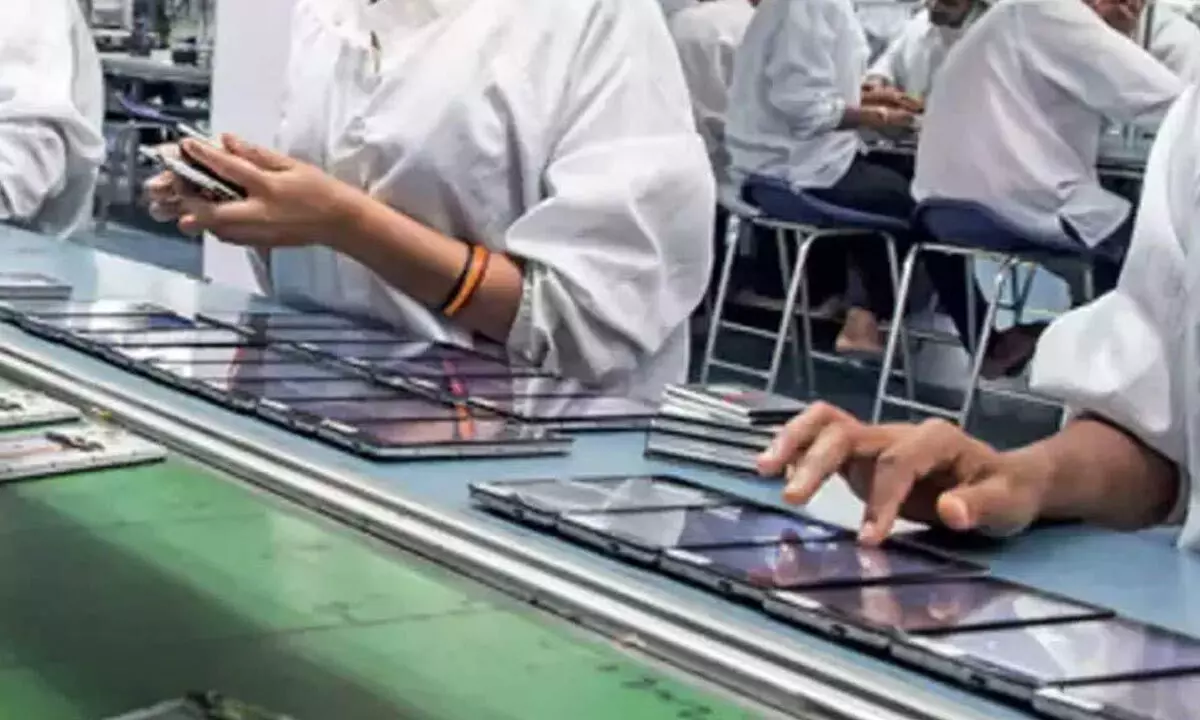Giving a timely push to ‘Make in India’ manufacturing
Is India on the cusp of a manufacturing boom? The Centre is hopeful that, given its potential, the country can become a global manufacturing hub, with a $500 billion volume by 2030.
image for illustrative purpose

Is India on the cusp of a manufacturing boom? The Centre is hopeful that, given its potential, the country can become a global manufacturing hub, with a $500 billion volume by 2030. In 2021, it was $7747 billion. That is the hope and there are some good signs on that front. S&P Global India Manufacturing Purchasing Managers’ Index showed a three-month high in March, with the index rising to 56.4 from February’s 55.3. US technology major Apple has increased its iPhone production in India quite significantly, having made about seven per cent of them in the previous financial year. Apple partners Foxconn Technology Group and Pegatron Corp assembled its products in the country, which is a remarkable progress, considering that India manufactured just one per cent of the world’s iPhones in 2021.
Chinese smartphone maker Vivo has also announced Rs 1,100-crore investment in their new 169-acre manufacturing unit in Greater Noida. As per the recent index of industrial production (IIP), manufacturing grew 5.3 per cent in February, which is not very impressive as the base, February 2022, was very low at 0.2 per cent. However, data for the April 2022-February 2023 period showed 4.9 per cent rise, which was against 13 per cent in the corresponding period in 2021-22. Similarly, capital goods, implying capacity addition to the economy, have been doing well. The segment grew 10.5 per cent in February, but this was against a low base of 0.3 per cent in February last year. But in the first eleven months of the last fiscal, capital goods grew by a whopping 13.4 per cent, against a very high 19 per cent in the corresponding period in 2021-22, which are signs that manufacturing is in a recovery mode. Another survey conducted by Ficci shows that capacity utilization in the manufacturing sector stood at 72 per cent in the second quarter of FY22, indicating the sector’s significant recovery. More importantly, capacity utilization was 69.1 per cent in the Covid-hit Q2 in 2019-20.
India is gradually progressing on the road to Industry 4.0 through the government’s initiatives like the National Manufacturing Policy, which aims to increase the share of manufacturing in GDP to 25 per cent by 2025 and the production-linked incentive (PLI) scheme to boost the core manufacturing sector at par with global standards. All these sound nice, but the objective reality is not as cheerful. Never once since 1960 has the share of manufacturing in GDP even touched the 20 per cent mark. The high watermark was 18 per cent, which was touched in 1979 and 1995. From 16 per cent in 2015, it gradually declined to reach a low 13 per cent in 2019. It went up to 14 in 2021.
The government claims that industrialists can take advantage of four market opportunities: expanding exports, localizing imports, internal demand and contract manufacturing. With digital transformation being a crucial component in achieving an advantage in this fiercely competitive industry, technology has today sparked creativity. That’s true but the Central government should also ensure that states carry out economic reforms at their level. This is the sine qua non of rapid industrialization.

